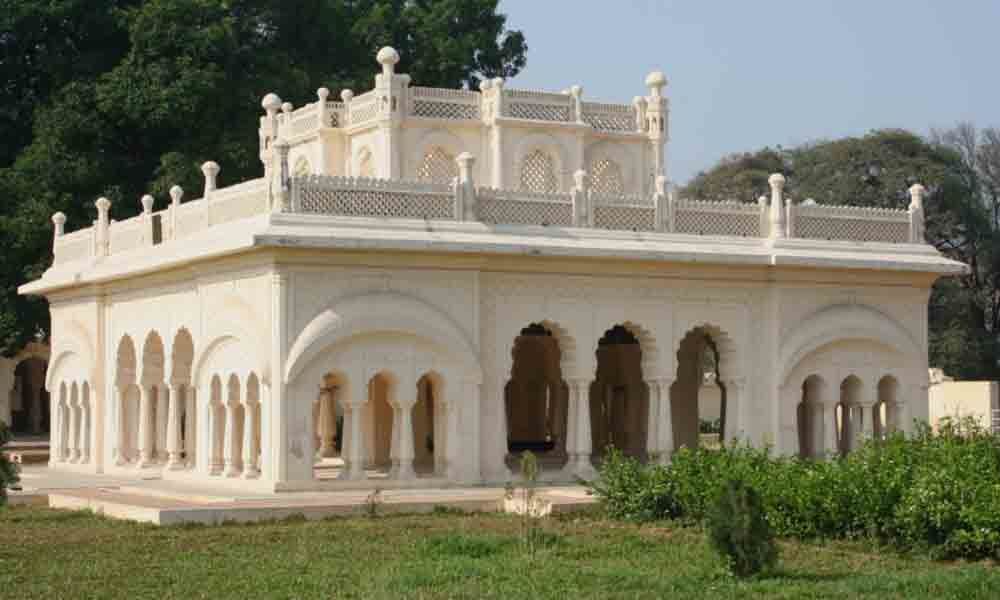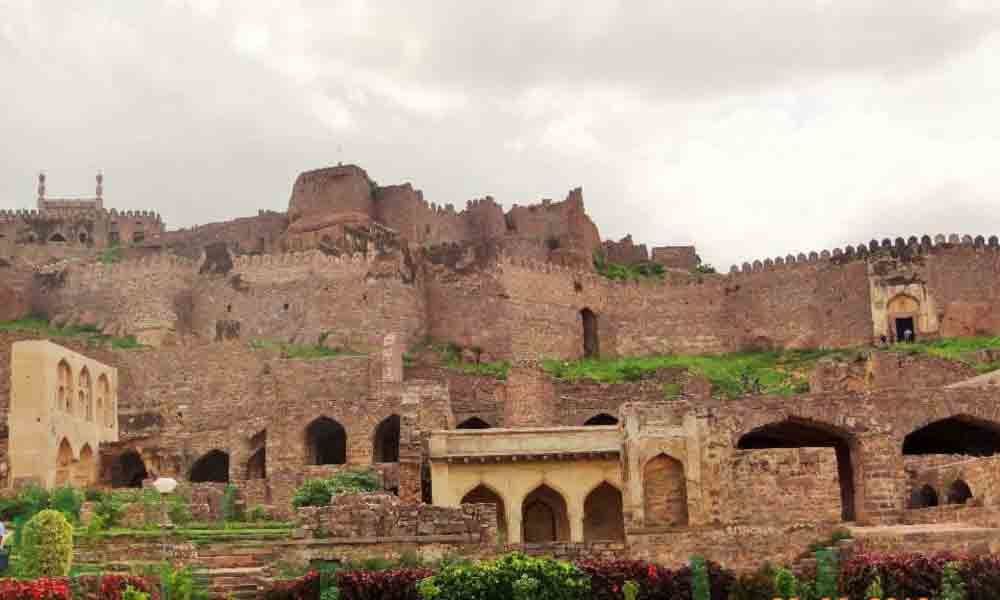Live
- Study Reveals Teabags Release Billions of Microplastics and Nanoplastics, Entering Your Body
- Workplace Wonders: Creative Secret Santa Gifts for Colleagues
- Kumbh Mela 2025: Essential Guide to Comfortable and Respectful Attire for Maha Kumbh
- Hyderabad Real Estate Faces Setback: Property Sales Drop 7% Year-on-Year in 2024
- Gnani’s Gen AI Solutions Revolutionising BFSI
- Trump's WHO threat sparks debate on the efficiency of global health governance
- ICC Champions Trophy 2025 Schedule: India vs Pakistan Match Set for February 23 in Dubai
- Champions Trophy 2025: Full Schedule, Match Dates, Venues, Timings, and Updates
- FRAI Urges Government to Provide Technology Platform for Kirana Stores to Stay Competitive
- Not just Gen Z, millennials too: Redditors discuss the wave of pet parenthood embraced by young Indians
Just In
There are several representations of the city of Hyderabad in English literature. However, no work of art has captivated the popular imagination as Sarojini Naidu's poem, 'In the Bazaars of Hyderabad', 1912; its brisk rhyme scheme and dulcet images have eternalised the city as an oriental fantasy. Hyderabad in 2019 is a metropolis teeming with new flavours and cultures, and emerging young poets painting the world of literature in their verses.
What The city in recent years has nurtured a steady platform for poetry in English and other languages. Young city poets who have earned literary eminence by publishing their works in books, journals, social media and other digital venues have often painted Hyderabad on the canvas of their imagination. In the present article, we shall walk through the lanes of English poetry on Hyderabad by the emerging city poets. We hope to explore beyond the bazaars and climb the ancient rocks, feel the cool of the Deccan rain, listen to the hushed voices of tombs along with a cup of sweet Irani Chai.
Places and Spaces
Pitambar Naik's poem, 'The Necklace RoadThe Necklace Road', The New Indian Express, 2017 swirls around the revelries of young love, in the pre- Jubilee Hills-pub-hopping phase of the city when sidewalks around Hussain Sagar Lake were the only respite for lovers:
In the marrow, fleshy rhythms
A flowery tide I reminisce
Years back how you, I and she sipped away
To dive into the Hussain Sagar
Like some frolicking coots or kingfishers.
You like star gazing, bird watching
Swimming, chugging, tapping in the rain
Solitude, the freshest full moon
A diamond pendant quarantined
Hibiscus gaily glee
The city folks aloofly inject intravenous
And tubes of drips into your body
The necklace Road twirls swirls, stoops.
(lines 1-13)
The city blossoms into an elusive space for private emotions in Saima Afreen's poem,
'A Small White Balcony in Banjara Hills', Sin of Semantics, Copper Coin Press, 2019:
docks boat-like near a road the colour of champagne.
I dip my fingers in it and shape your silhouette
lit up with the forest fire from within whispering of the legends safe In my belly and your thighs,
a child wipes them from his fingers. A drop shields the moon.
Its honey trickles from boundaries like caramel from the plate of a
Syrian child who doesn't know the difference between a refugee camp and his sister's dollhouse only the taste is sweet like sleep—the comfort of losing maps behind eyelids. (lines 1-12)
Hyderabad becomes a tale of three sisters in the poem 'Hyderabad', When Lovers Leave and Poetry Stays, Authorspress, 2018 by Jhilam Chattaraj:
This is city of cities spread on the henna laced hands of three sisters.
The eldest in lacquer bangles seduces travellers with sweet Irani chai. (lines 1-4)
The poem further highlights the gagged voices of the rivers and lakes of the city:
Her eyes never close, but at every sunrise they tremble at the cloudy poison rising from the dead Musi like a hungry tropical snake. (lines 8-12)
Rocks and Rain
The silent rocks that adorn the city, appear as symbols of hope in poet Shikhandin's work, 'Rocks of Hyderabad' written in the memory of a ten-year-old child who was sodomised and killed by a young man:
The rocks of Hyderabad have more heart little one. In the heat of summer they move apart. They respond to something. People here are immune.
No outrage at all. Other than newspaper reports. A lone placard crying out loud. No candle lit vigils. No marches. (lines 1-7)
The poem continues its reflective tone:
The rocks of Hyderabad remain serene when they fall to the blows of minarets of brick and glass and glazed stone. The rocks pave the way for the fragile new monuments rising every day.
They stand huddled on the flanks of roadways. They swallow your pain and cover up their maws with rain water. (lines 27-36)
The rocks of the city when kissed by the rain create a rare and poignant sentiment. Rain in placid breaths evokes nostalgia and desire in Nabina Das's poem, 'It Rains':
it rains the wind comes from the east with garbage and dust in its wake the drops fall right after the jacaranda is caught with torn plastic bags, blown-away undies i want to say amid all this -- listen, I miss you I sit quiet it continues to rain the road has bent from eternity in Dakkhan's aandhi under the hillock of Maula Ali a ragpicker runs after his collection tornadoed away all so naturally mundane, and I want to say -- I miss you (lines 1-11)
The emotional nucleus of the city has always been alive in its poetry. Amita Desai, Executive Director, Goethe Zentrum, Hyderabad, says that the rise of "mobility" has led to the growth of English poetry in Hyderabad, a city which otherwise has had a long tradition of Mushaira in Telugu, Urdu and Hindustani. Amita successfully brought city poets writing in English and bards of regional languages together at 'Kaavya Dhaara', a three-day poetry reading event at the Hyderabad Literary Festival, 2019.
City of History
Hyderabad is a city of lost whispers. Paresh Tiwari's prose-poem, 'A Poet Called Moon', 2019, ruminates on the present relevance of the legendary poet, Mah Laq Chanda Bai:
Chanda sits alone at the edge of the holy hill, looking down. Wondering if the young girl passing by would stumble upon her mausoleum. Would she trace her fingers over a poem carved on the teakwood door? What will she take away from the inch-thick dust settled over its curves?
Between the fear of the fowler and autumn, The bulbul's life hangs by a thread. (lines 14-17)
Let's Taste Hyderabad
Hyderabad is famous for its culinary delicacies. Akila Gopalakrishnan in her crisp poem 'Double ka Meetha: Hyderabad and Me', Lakdi-ka-pul- the Poetry Bridge, 2016 by Twin Cities Poetry Club, writes about her relationship with the city's gastronomic delights:
Ten years were spent finding hotspots for ragda and haleem, soak fingers in biryani and mirchi ka saalan, hunt down recipes of qubaani ka meetha.
My hands have taken ten years to calligraph Arabic mehendi, drape the gadwall pattu, clap in gusto watching Hyderabad
Nawabs and buy gift-boxes of Karachi biscuits. (lines 14-22)
The poem ends on a tender note:
Clumps of pink and white bougainvillea flutter as witness and we sigh about it over a Cappuccino: 'Times are changing' (lines 32-33)
Poets of Hyderabad
The hive of the city, much like the human heart is never constant. However, undeterred by fluctuations of time and space, the city has always cultivated artistic ambition and imagination. Poets of Hyderabad have skilfully blended the city's cultural memories with its everyday history. They have aesthetically reclaimed Hyderabad from the exotic image of a bazaar to a modern, cosmopolitan figurine balanced on the shoulders of heritage, high on emotions and radiant with new-born stories.

© 2024 Hyderabad Media House Limited/The Hans India. All rights reserved. Powered by hocalwire.com









